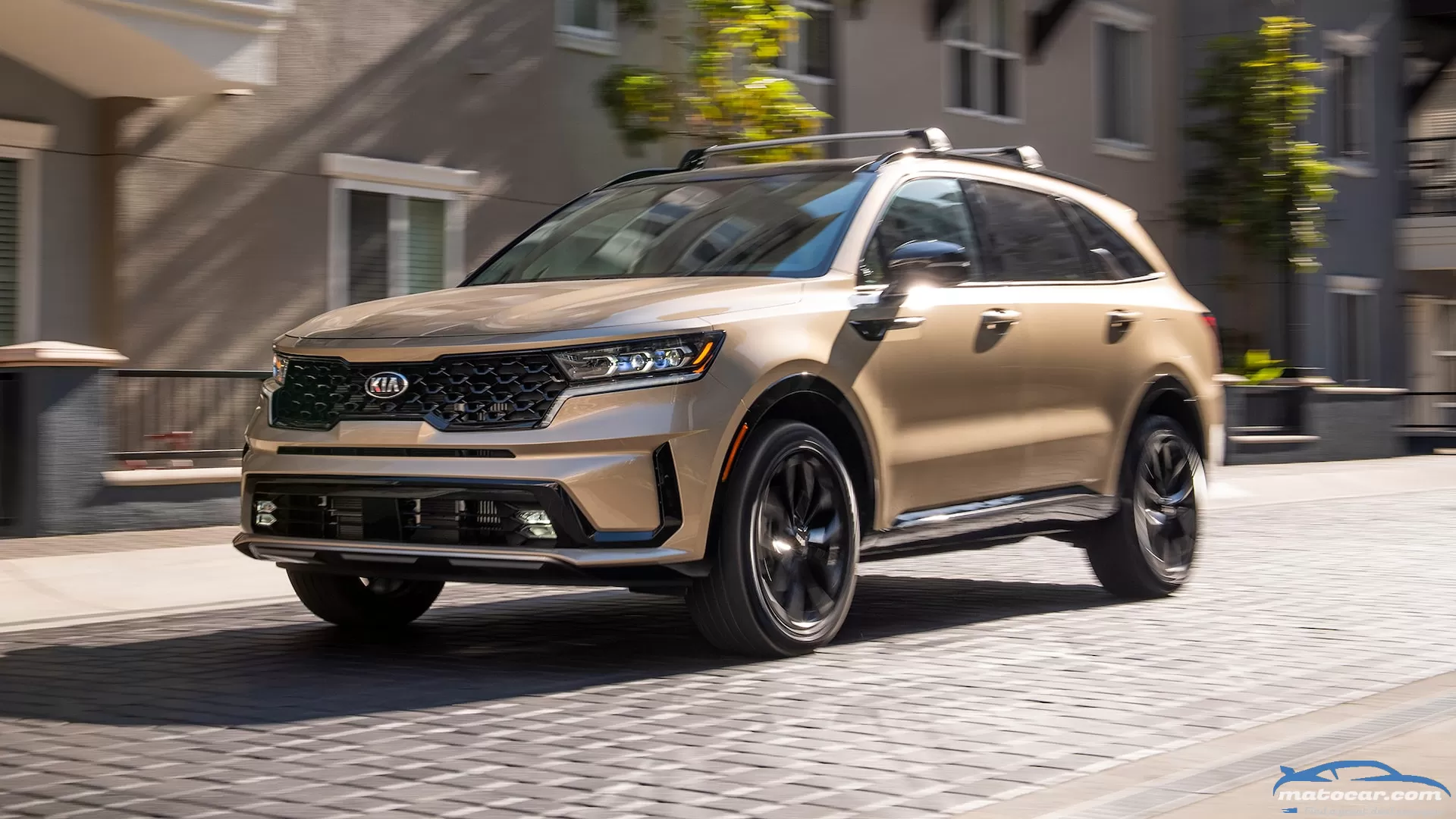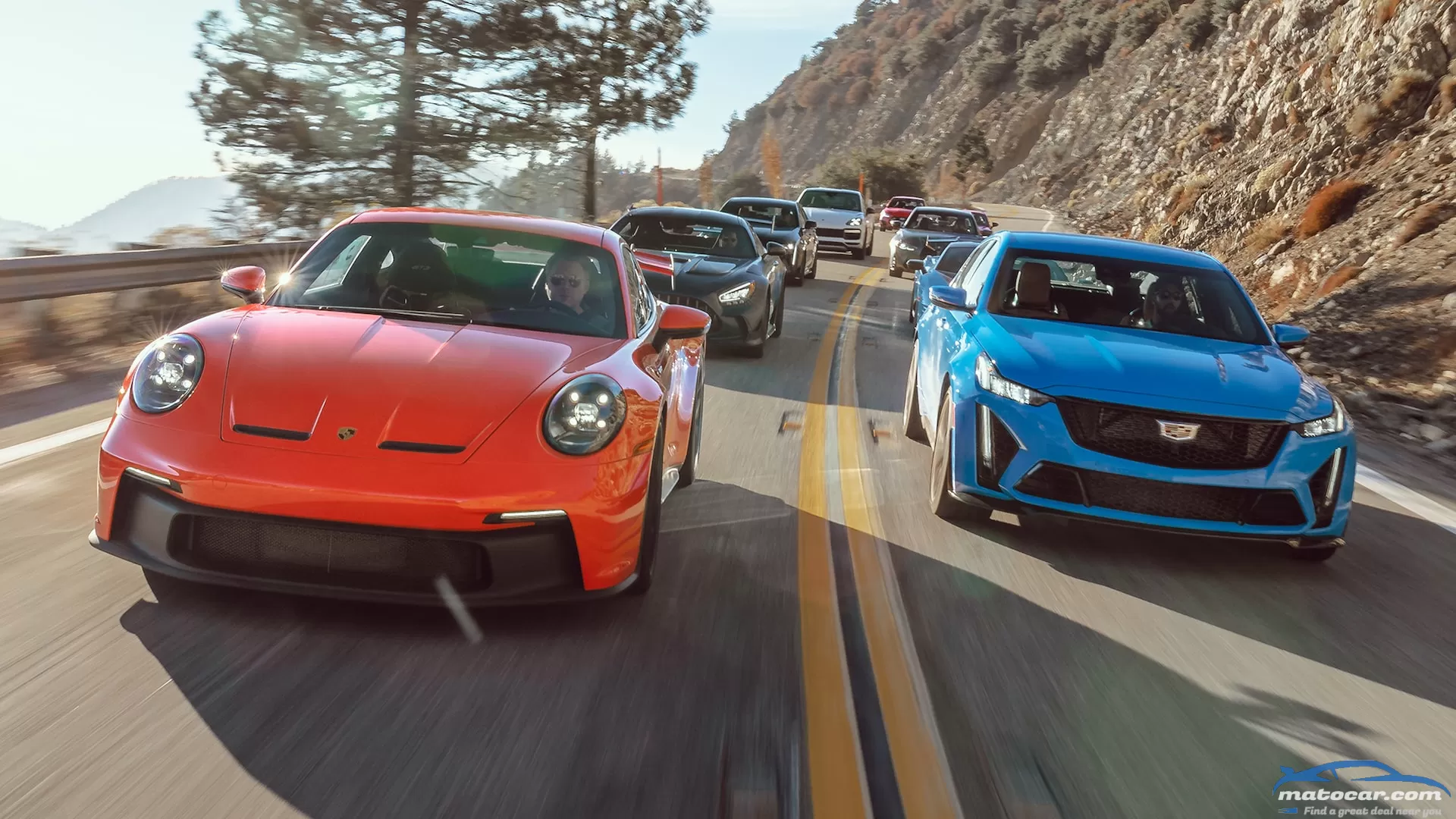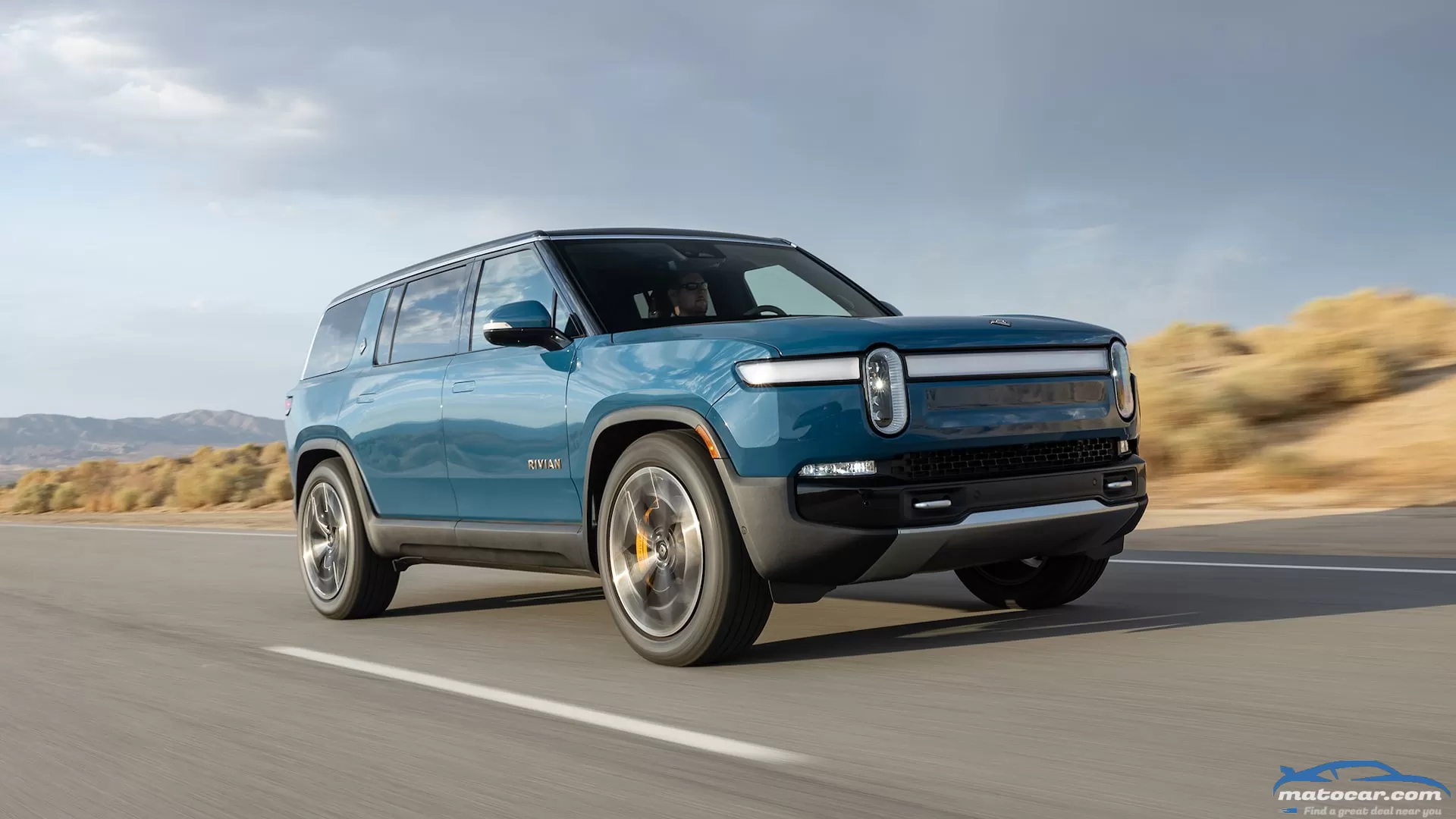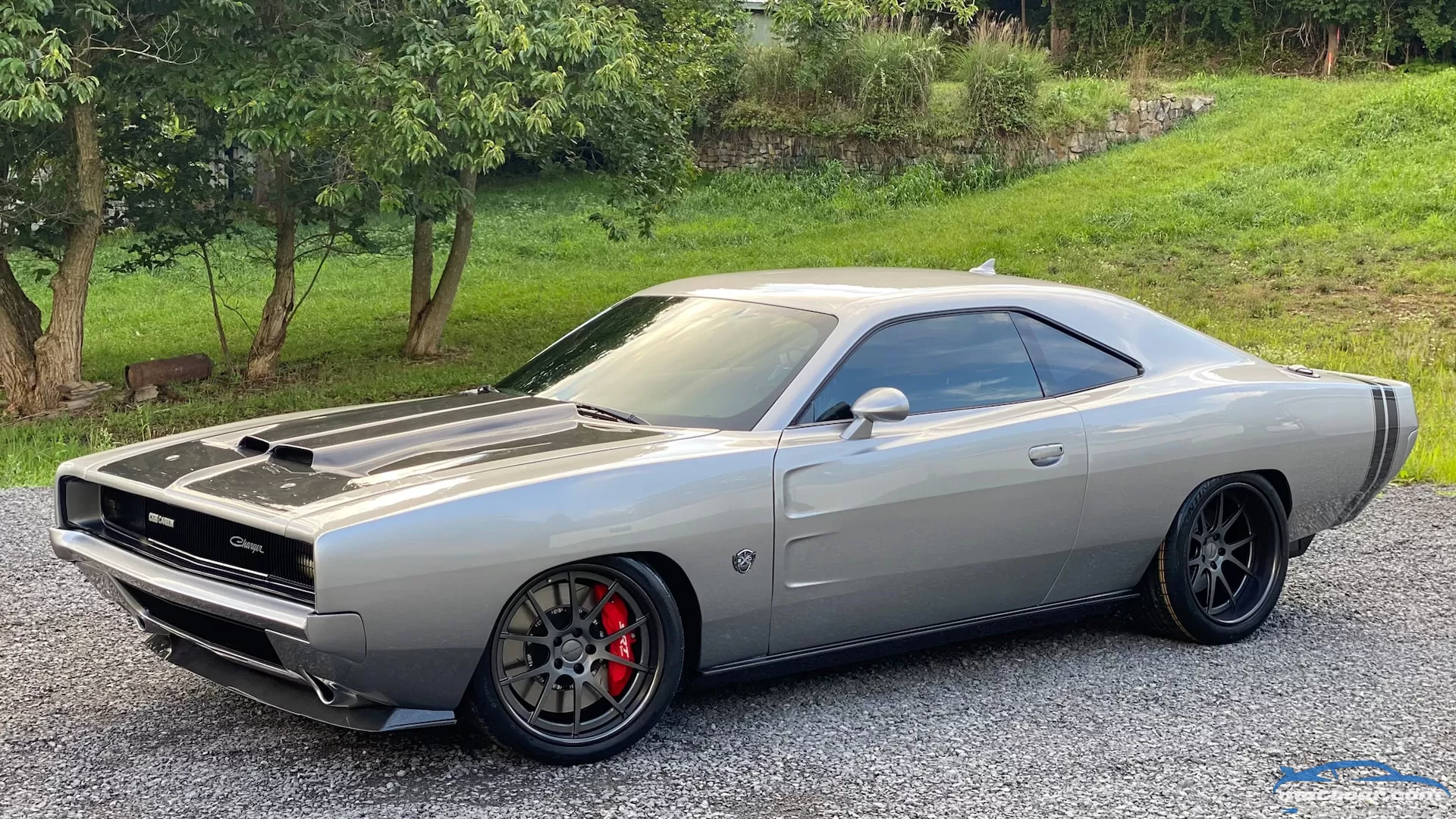What Was a Year With the Kia Sorento Like? Here's Our Verdict

As a midsize crossover with three rows of seats, Sorento teeters on the precipice of brilliance and irrelevance. Some may find its in-betweener form factor ideal (it's really more of a full-time two-row with part-time third-row perches); others that something more decided—like Kia's smaller smaller, two-row Sportage or larger, three-row Telluride—would better fit their needs. Over the many months and more than 23,000 miles we spent with the 2021 Kia Sorento SX in our long-term review fleet, we decided that, here, segment-splitting works. Better than simply being functional, the Sorento gives lots more to like than not.
Minimal Tarnish
Let's get the negatives out of the way. First and foremost is the dual-clutch transmission's low speed behavior, a gripe we've had with the Sorento since our first drive. When pulling away or creeping forward, particularly on an incline, it can stutter, leading to hesitant, jerky departures.
Despite that evaluation, we'll qualify it as minor annoyance. We call it out mostly for drivers accustomed to traditional automatics. If that's you, you'll notice that the Sorento's dual-clutch doesn't let you depart in a consistent and immediate way. You'll also likely be able to overlook it. And after first gear, shifts are nearly invisible, perceptible audibly more than any other way.
Relatedly, turning off the engine start/stop system became routine. It restarts too slowly, which combines with the transmission's fumbles to make smooth getaways impossible. We preferred sacrificing a little bit of fuel (and taking the emissions hit) for the sake of drivability.
Fuel Efficiency and Maintenance
Regarding fuel, in 23,033 miles we averaged 22.8 mpg, not quite meeting the EPA's 24 mpg combined economy rating, but not missing it by much either. Regardless, its commendable, given MT drivers' eager right ankles, and that we had a bulky tent fixed to the Sorento's roof rails for well over 4,000 miles. Additionally, we bested the EPA's 425-mile range estimate several times, at one point draining 471 miles out of the tank.
Two stops for scheduled service totaled $354.18, making the Sorento more expensive to maintain than similar long-term SUVs we've had in our fleet. And it would have cost even more had we bought the $300 advanced fuel system cleaning service proposed at the second visit. We spent less than $350 each on our 2017 Mazda CX-5 and CX-9, anda different Kia, our 2020 Telluride, was a bargain at $120 spent over a similar number of miles.
Nevertheless, the Sorento remained reliable during its stay. The only thing resembling an unexpected issue was a subtle yet persistent creaking noise that began emanating from the headliner as the odometer neared 20,000 miles.
A Serious Glow Up
On to the good stuff. We never got over the Sorento's crisp, angular styling. It's incomparably improved over the previous Sorento, and to our eye one of the better-looking vehicles in its segment, especially in our test vehicle's Crystal Beige hue.
The cabin also convinced us with its functionality and ease of use. We appreciated Kia's preference—which seems to be changing—for unfussy physical knobs and switches, but the capacitive buttons mixed in worked as intended, too. Settling in was eased by the little bins on the center console, and getting out facilitated by the easy-pull door handles—Kia thought through the details, including those stylish geometric air vents. We have no gripes about our $42,190 SX-trim Sorento's 10.3-inch infotainment touchscreen, although a driver-information display larger than 4.2 inches would've been nice. Maybe it'll arrive in the mid-cycle update.
Whether the second and third rows were upright or folded, the Sorento readily adapted to the situation. Its wide-opening rear doors made access a breeze, as did the super-simple folding operation of the second-row captain's chairs. Drivers who plan to frequently pack their SUV to capacity should probably size up, but with ventilation and USB ports the Sorento's far-back seats produced few complaints. Our crossover's enormous panoramic moonroof was a favorite feature for riders-along. Folding the rear seats opened up a great deal of cargo space, making it easy for this writer to toss in his mountain bike.
Then there was actually driving the Sorento. During its evaluation at our 2021 SUV of the Year contest one judge called it "the feel-good hit of the competition," a sentiment that held true through our long-term test. With sensitive steering and nimble reflexes, the Sorento had that oft-praised attribute of feeling smaller than it is. Undulating pavement could set the ride afloat slightly, but the Sorento's overall handling verve made it enjoyable to pilot.
Despite the aforementioned dual-clutch fumbles, the turbocharged 2.5-liter I-4 always delivered solid acceleration. We evaluated other Sorento powertrain options in parallel with our long-termer, and came away convinced that this turbo mill is the one to get even if it's not supremely refined or efficient. The all-wheel drive system behind it seemed unbothered by the few dirt roads we traversed.
Over the many, many highway miles we covered—throughout California, and to Oregon, Utah, Nevada, Colorado, Arizona, and New Mexico—the Sorento's driver aids rarely faltered. The adaptive cruise control was responsive and consistent, aided by solid lane-keep assist which would take the lead in staying centered even in surprisingly tight curves.
Good as Gold
On the 2021 Sorento's arrival, we found ourselves thinking about Kia's midsize crossover in an unusual way: Surprised to realize we were giving even a modicum of mental energy to a Sorento in the first place. Prior iterations never warranted much consideration, let alone actual affection. But now that our Sorento is gone, we find our thoughts cast in another unexpected direction—we miss it. Not only did it prove itself as the best Sorento ever, but as a worthy competitor to crossovers bordering it on either side of the size spectrum. It could be a while yet before a similarly multitalented SUV joins our long-term fleet.
Looks good! More details?For More on our 2021 Kia Sorento:
- The Kia Sorento joins our long-term fleet
- Microchips aren't the only thing in short supply these days
- A trip to the track
- What we learned over 4,000 miles of camping in our Sorento
- Tech that works, and tech that doesn't
- Which Sorento engine is best?
- Up the Creek
You may also like
It's time to present the finalists for the inaugural MotorTrend Performance Vehicle of the Year. Yes, after running through our contenders—those rides that missed the cut for the final round of voting the PVOTY honors, we're introducing those that did make the finalist cut. One of these vehicles earned our Golden Calipers, having excelled in all six of our criteria (safety, value, advancement in design, engineering excellence, efficiency, and performance of intended function). The weighting of some of those criteria may differ slightly from our Car, Truck, and SUV of the Year competitions—after all, when outright performance is our focus, efficiency is perhaps graded on a curve—but every single one is considered when choosing our winner.Read on to meet the first four members of our finalist field—the rest will be unveiled tomorrow—to represent the cars that made it out of our initial round of voting following evaluations at Hyundai's Proving Ground outside of Los Angeles. The finalists then went on to road drives on Angeles Crest Highway and, later, grueling track tests at Willow Springs Raceway. Come back on Monday, February 14 to see which one emerged with the title!
rivian r1s Full OverviewPros908 lb-ft of torqueUnique styling316 miles of electric range ConsTight third rowStiff ride on all-terrain tiresExpensiveDriving loads of new and flashy cars around Los Angeles, we're used to curious people stopping us to ask questions. From testing supercars to SUVs, we're lucky to do what we do for a living, and we love talking to folks about the latest trends in the automotive industry. But nothing tops our experience with the 2022 Rivian R1S electric SUV; every time we parked it, strangers approached immediately to ask us questions about one of the hottest vehicles on the market.Indeed, with its charming styling, room for seven passengers, and impressive technology, the 2022 Rivian R1S gets a lot of love, even in L.A., where you often see some of the world's rarest and most expensive vehicles. We were amused to see people's reactions when we talked to them about its range or power numbers.Same But DifferentAlthough the Rivian R1S SUV and R1T pickup truck share the same chassis and four-motor setup, there are significant differences, with length being the biggest one. The R1S' wheelbase is 14.8 inches shorter, and its overall length measures 200.8 inches—16.3 inches shorter than the truck. Those who park their R1S in a garage will note the difference, and those who go off-roading will also see better breakover and departure angles thanks to the shorter wheelbase and rear overhang.InsideJust like in the R1T, the 2022 Rivian R1S' interior is elegant, futuristic, and cool. The minimalistic approach provides a vibe that blends premium materials with lots of technology to make a great impression on anyone who rides in it. From the open-pore wood that combines ambient lighting elements to the minimalist switch gear, the cabin feels like it's next generation. Many cues appear taken from Tesla—there's no push-start button and no buttons to adjust the side-view mirrors or telescoping wheel, and the shifter is a stalk on the steering column. But unlike a Tesla Model 3 or Model Y, a second screen in front of the driver acts like a digital instrument cluster to display vital information.Although the R1T offers more storage options than the R1S electric SUV, the amount of storage in the R1S remains impressive. We do miss the R1T's gear tunnel, but the R1S has a deep hidden compartment beneath the cargo floor that can store a carry-on bag. Plus, the frunk is just as expansive as in the R1T, and it has a drain plug so you can use it for tailgating (or should we say frontgating?). There are also drawers under the front seats to keep some documents handy, should you have the need to do so.Second-row space is more than decent, with plenty of real estate for adults in terms of legroom and headroom. People sitting back there will enjoy heated seats and USB-C ports rightly placed on the seats in front of them, making it easy for them to charge and use their devices at the same time.However, accessing the third row is a little tight for adults. The space between the C-pillar and the second row is narrow. Once you make it back there, second-row passengers need to move their seats up a few inches for third-row riders to have enough legroom. Because the third row is so low to the floor, most peoples' knees will be at a higher position than their hip point, which is uncomfortable for long trips.Although the 2022 Rivian R1S' interior space isn't spectacular, it's also not bad. At 6 feet tall, you wouldn't want to spend much time in the third row, but you would likely be OK with short trips in the city. We're sure most R1S owners will keep the third row folded so they can enjoy more cargo space. Second-row seats can be folded from the cargo area with an electric release, but the third row must be folded manually, which is a bit odd—especially for an SUV that costs more than $95,000. Fold the second and third rows, and you'll get a flat floor with ample room for your gear or for Home Depot trips.Like with most electric cars today, the R1S' center screen serves as the command center. Besides displaying the nav system and controlling the A/C, heated and ventilated seats, and other basic functions, the screen allows drivers to switch between driving modes, raise or lower the electric SUV's air suspension, and turn on Pet Comfort mode (and, eventually, Camp Mode). Pet Comfort mode keeps the air conditioning on inside the cabin and displays a message on the screen telling outsiders the pets are in good condition.The DriveFew SUVs in the world can do what the 2022 Rivian R1S does. With its quad-motor setup, which delivers 835 hp and 908 lb-ft of torque combined, the R1S is one of the quickest SUVs MotorTrend has ever tested. Yes, you read those numbers right; no production Lamborghini, for example, makes this kind of power. A seven-passenger SUV producing this kind of punch is otherworldly.During our instrumented testing, the R1S with all-season tires accelerated to 60 mph in 3.1 seconds and completed the quarter mile in 11.6 seconds at 111.2 mph. Opting for the all-terrain tires holds you back by just 0.1 second on the way to 60 mph and only 0.2 second in the quarter mile.These numbers are even more impressive when you look at the Rivian's heft. Because of its 135-kWh battery pack, the R1S weighs more than 3.5 tons, and you definitely feel it on the road. Its low center of gravity and nimble steering, however, reduce the perception you're driving a lumbering behemoth.On city streets, the 2022 Rivian R1S is quiet and composed, delivering power to pass just about anyone who's around you. It doesn't hesitate to merge onto the freeway, either, and you feel your back pressed against the seat when doing so. Bumps and ruts are absorbed nicely thanks in part to Rivian's cross-linked suspension. And depending on the drive mode you select, you can have different experiences behind the wheel. Conserve disconnects the rear motors to save power. All Purpose is the normal mode, with all four motors working together. Sport is the most fun of all, naturally. It's worth noting we spent most of our time driving the Rivian R1S with all-terrain tires, and we felt a stiffer ride and heard a bit more noise in the cabin—things to consider if you're interested in this option.Yeah, But How Safe Is It?Unfortunately, neither IIHS or NHTSA has crash-tested the Rivian R1S or the R1T, but both are equipped with a long list of active safety features. With Rivian Driver+, the R1S bundles adaptive cruise control, lane keep assist, and highway assist to hold the SUV centered in its lane while keeping a good distance to the car in front. Two taps on the shifter stalk activate the entire suite, and it will alert you if the road becomes unclear or if the systems can't handle the situation.Every R1S is equipped with cameras, radars, and other sensors, and all of them work together in pursuit of a safe experience.Should I Buy the Rivian R1S?The 2022 Rivian R1S is an impressive electric SUV with lots of technology, storage options, and power. It's also one of the most fun SUVs we've driven—something you don't often hear about a seven-passenger giant.All of this is great, but pricing will certainly keep a lot of people away from the R1S. Our two test vehicles were priced at $96,000 and $98,750, and as much as we liked its attributes, we wondered aloud whether that's too much for an electric seven-passenger SUV. Prices recently suffered a steep hike, and we wouldn't be surprised if Rivian increases the R1S' sticker yet again. But if you can afford it and you're looking for a family SUV while thinking of switching to electric power, the 2022 Rivian R1S checks all the boxes.Looks good! More details?2022 Rivian R1S Launch Edition (A/S tire, A/T tire) Specifications BASE PRICE $91,500 PRICE AS TESTED $96,000, $98,750 VEHICLE LAYOUT 2 x Front- and 2 x rear-motor, AWD, 7-pass, 4-door SUV MOTOR TYPE Permanent-magnet electric POWER (SAE NET) 415 hp (front), 420 hp (rear), 835 hp (comb) TORQUE (SAE NET) 413 lb-ft (front), 495 lb-ft (rear), 908 lb-ft (comb) TRANSMISSIONS 1-speed automatic CURB WEIGHT (F/R DIST) 7,068 lb (48/52%), 7,091 lb (48/52%) WHEELBASE 121.1 in LENGTH x WIDTH x HEIGHT 200.8 x 79.3 x 71.5 - 77.3 in 0-60 MPH 3.1, 3.2 sec QUARTER MILE 11.6 sec @ 111.2 mph, 11.8 sec @ 111.6 mph BRAKING, 60-0 MPH 121, 131 ft LATERAL ACCELERATION 0.82, 0.78 g (avg) MT FIGURE EIGHT 26.1 sec @ 0.71 g (avg), 26.4 sec @ 0.69 g (avg) EPA CITY/HWY/COMB FUEL ECON 73/65/69 mpg-e EPA RANGE, COMB 316 miles ON SALE Now Show All
The dance we do as hot-rodders typically goes like this: We find a classic car, strip it down to the bare body, and then rebuild it to suit our own, often modernized vision. With a pro touring- or restomod-type build, that includes adding a high-power modern EFI engine, modern brakes (often with ABS on the nicer builds), and amenities like air conditioning and a rockin' audio system. In essence, the classic lines of the old body are kept, and the newest performance and cruising technology is grafted to it. It's time-consuming and expensive, but it gives us the look we want along with modern performance.But what if you did it the other way around? This would be where you took a modern performance car and added body panels to replicate the classic lines. This isn't a new idea, but to be honest we haven't loved the results in the past. The problem is that modern cars have modern dimensions and structures that don't always play nice with the lines of our classics. This is especially true around the windshield and A-pillars. For example, we remember a company that was trying to make a C5 Corvette look like a vintage C2 'Vette, but the windshield area just killed it since the C5's A-pillars were way too swept back for aerodynamics. It just looked wrong. We had yet to see one of these retrofied modern muscle cars done where the proportions were right, or at least close enough to still look good.That was until we spied the builds from eXoMod Creations. It was their C68 CARBON build (a clever code for 1968 Charger) and it actually looked like a vintage Dodge Charger! Now, we're not saying it's an exact copy, but it certainly captures the soul of a '68-'70 Charger that's been given a 21st-Century makeover. You get all the modern performance and tech of a new Dodge Hellcat (707 hp) or even a Hellcat Redeye (807 hp) with the vintage vibe of its '60s-era ancestor. They are also currently offering the C69 CARBON, which is reskinned in carbon fiber to look like a 1969 Charger.eXoMod Creations owes a thank you to Dodge for making this possible. You see, the C68 CARBON Charger is exactly the same length as a bone-stock 1968 Charger. It also has the exact same wheelbase! Add in that the windshield rake isn't nearly as extreme as some cars, such as Camaros and Corvettes, and you end up with proportions that are close enough to work. One area that changes, though, is the car's width, since the eXoMod C68 CARBON is a true widebody. This is done with the quarter-panels and fenders instead of the fender flares used on a modern widebody Dodge. The result of all this body-swap voodoo is a modern Dodge Hellcat that has the look of a vintage Charger, with the right proportions so that your eye doesn't dismiss it all as some sort of bait-and-switch deal.As they said in that old Ginsu knife infomercial, "But wait—there's more!" You see, the new vintage-shaped body panels aren't stamped-steel, they're carbon-fiber. This means the new retro-modern Mopar is 400 pounds lighter than a factory Hellcat Challenger! The weight loss is akin to free horsepower for an already stupid-fast car. Oh, and the body panel swap retains Dodge's powertrain warranty.The interior of the eXoMod cars stays pretty stock with the exception of better, Italian leather for the seats. All the high-tech options found on a new Hellcat are still there, so you have heated and cooled seats, launch control, and safety stuff like airbags and backup sensors.eXoMod isn't stopping with Chargers. Other classic Mopars are getting the reskinned-in-carbon treatment as well. The D71 is styled after the 1971 Dodge Demon, and we have to say the rendering looks kickass. This ride, limited to just 25 vehicles, should be done around the summer of 2023. Like all the eXoMod cars there are tons of color, wheel, and trim options.Want something wilder? How about a Hellcat reskinned to look like a 1969 Charger Daytona? Yep, big nose, big carbon-fiber wing, and tons of attitude. They are currently building this Daytona and hope to have it on display at November's MCACN event in Chicago. All the eXoMod conversions roll on high-end Forgeline wheels. Even these rollers, which look like vintage steelies, are in fact 20-inch billet Forgeline wheels!Now this isn't an inexpensive proposition, but what is these days? Consider the cost of taking a 1968 Charger and building it into everything the 2022 Hellcat is. All the comfort, all the power, all the modern suspension parts, flush-mounted glass, and latest technology. A build like that would be hundreds of thousands and take an eternity to get done. eXoMod can convert your existing Challenger (all the way back to a 2011 R/T model year) for $275K and have it built, painted, and on the road in around 8 weeks! They also sell complete cars, customized to your tastes, starting at $400K for the 707-hp Hellcat or $450K for the 807-hp Redeye!For us mere mortals, nearly half a million bucks falls into fantasy land, but you could easily spend that much, and more than likely more, adding all the Hellcat guts and carbon fiber to a vintage Mopar, and still not end up with a car capable of reliably making cross-country drives. This car drives like a new Hellcat because, in essence, it is a new Hellcat. In short, this is just another way to skin the proverbial feline; a way to get those classic-car lines we love along with the modern kickass performance we've become accustomed to. To window-shop or place an order, click on over to www.exomodcarbon.com. If you're at the 2022 SEMA show in Vegas, look for booth 24995 in the Hot Rod Alley, where a new purple car that's just being finished up will be on display.Watch! Roadkill's General Mayhem Gets UpgradedIs the '68 Dodge Charger the "best car" like David Freiburger says? Maybe, but the General Mayhem is definitely one of the most iconic Roadkill cars. Watch as Roadkill Garage hosts Freiburger and Steve Dulcich give it tons of body upgrades and engine-saving modifications before hitting the road for proper break-in procedures—aka burnouts! Sign up for a tree trial to MotorTrend+ and start watching every episode of Roadkill Garage today! Video created by Little Dot Studios.




0 Comments